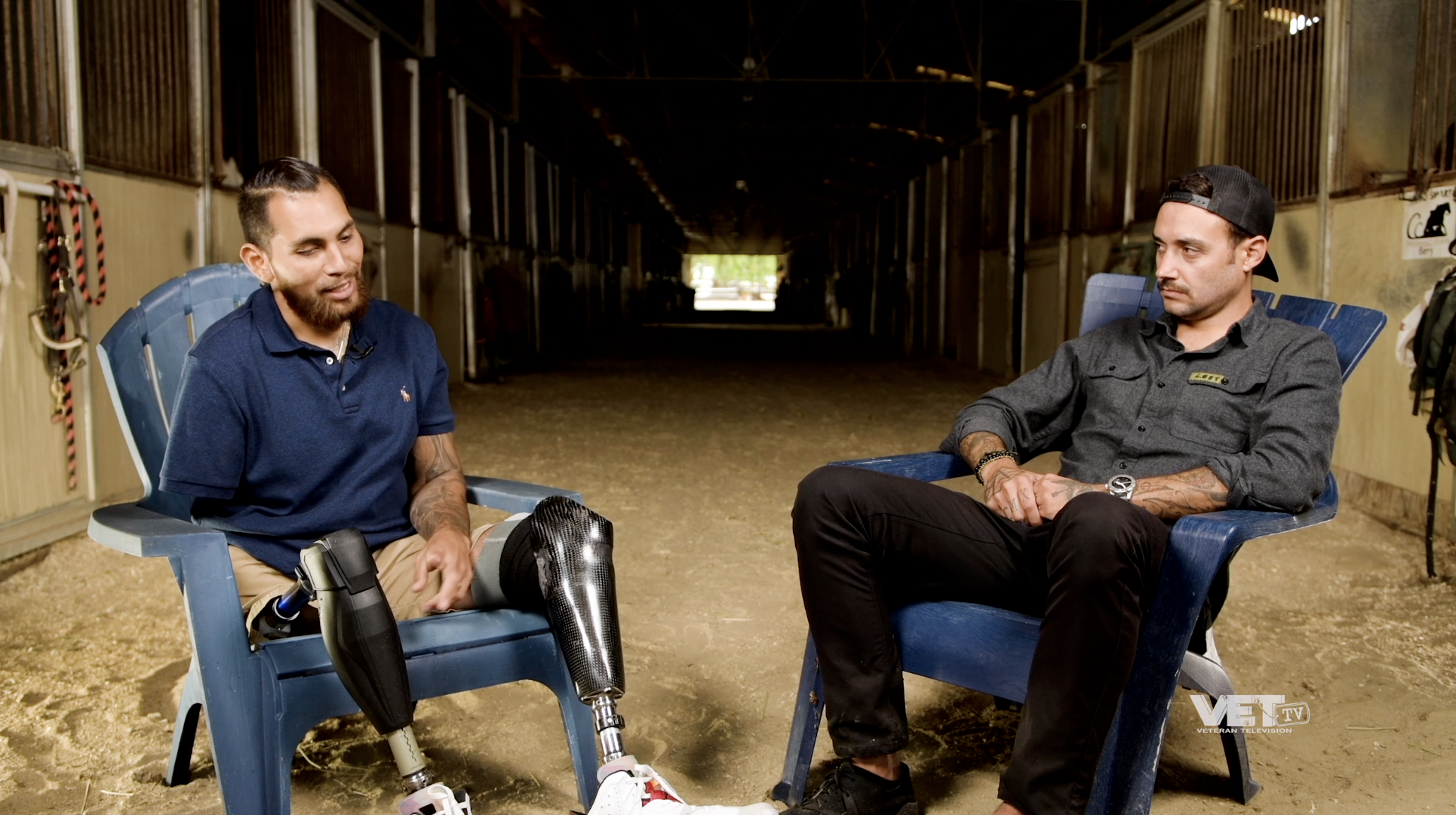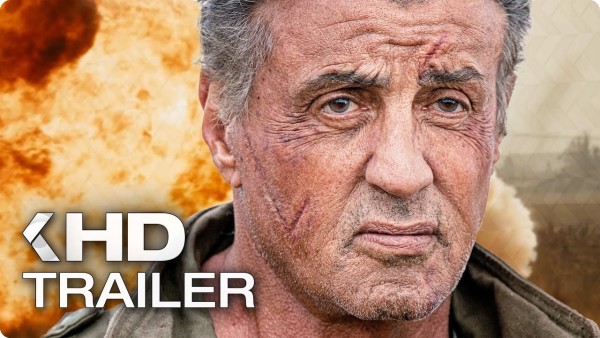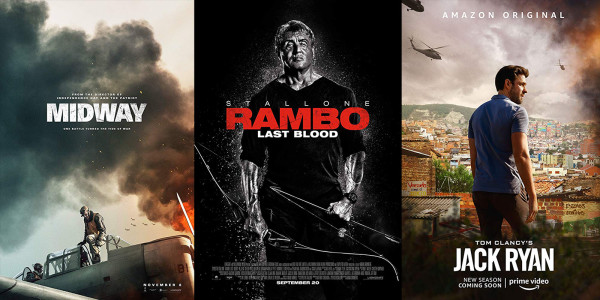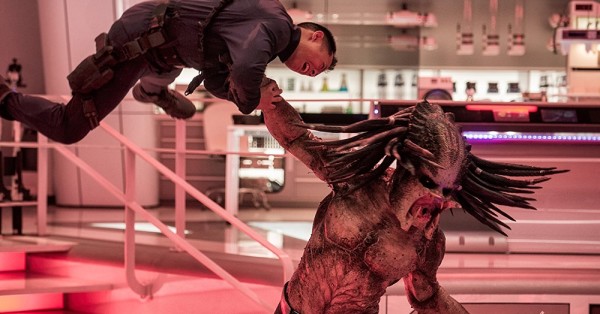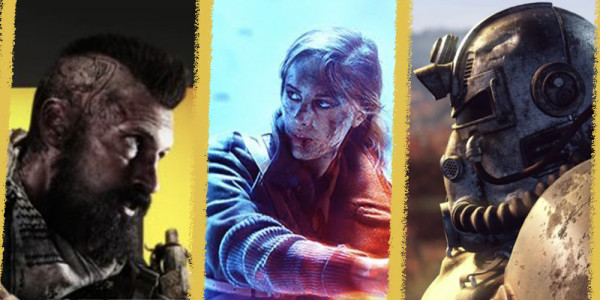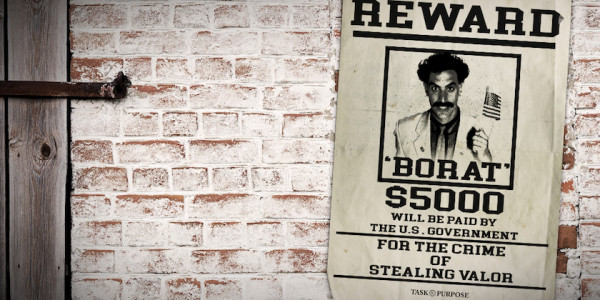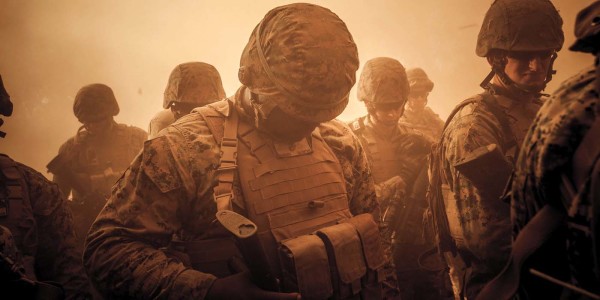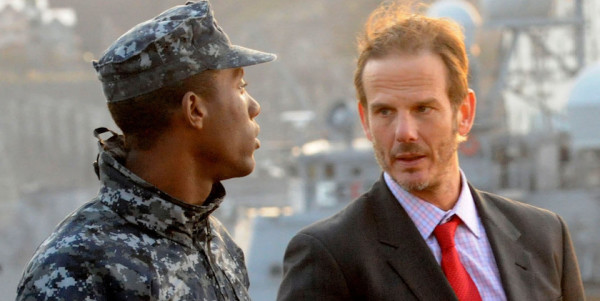Perhaps it’s easier to tell you upfront what this article won’t do rather than what it will. It won’t tell you how to feel about the war in Afghanistan. It won’t tell you how to feel about VET TV, a military and veterans-focused production company that has been strongly criticized for its content. And it won’t tell you how to feel about their documentary series, Let’s Talk About the War.
That’s mostly because I’m still figuring out how I feel about it.
Let’s Talk About the War was released in January. The longest of the six episodes is only 30 minutes, each combining in-person interviews with real combat footage and scenes from VET TV’s own series, A Grunt’s Life. The intent of the series, as director Nick Betts says at the beginning of each episode, is to give veterans a final say in the war in Afghanistan, which came to a crashing halt almost one year ago.
“After this 21-year war has ended, and seeing the fall of Kabul, it made me angry. I think it made all of us angry,” Betts, a U.S. Army sniper veteran who wrote, directed, and produced the series, says in the introduction. “But no one wanted to listen to us. No one gave a fuck about the sacrifice that we made for this country, and for the government, and the people of Afghanistan. It’s time for us now to hear from our veterans and what their thoughts are on the war.”
Subscribe to Task & Purpose Today. Get the latest military news, entertainment, and gear in your inbox daily.
From the moment the first episode starts, the series pulls you in with combat footage of cars driving down a highway only to be engulfed by smoke and debris after an explosion. Contemplative music plays in the background as a clip from inside a vehicle shows gravel exploding in front of it as it rolls over. Viewers then meet Betts, who interviews veterans of Afghanistan with a wide range of experiences.

The series features clips of conversations between Betts and different interviewees — Army and Marine Corps, enlisted and officer. The conversations range from humorous to contemplative, emotional, and serious. The first interviewee featured is Austin Mandelbaum, a veteran of the Army’s 75th Ranger Battalion, who says people with a “certain mental profile” gravitate towards special operations units.
“It’s essentially sociopaths with homicidal tendencies,” Mandelbaum says.
The entire series is like this: assessments that are so blunt you almost wonder if the interviewees knew it would be shown on camera. It covers a lot of ground, talking about the friction between enlisted troops and the officers above them, the mistrust between U.S. service members and their Afghan counterparts; civilian casualties; and the challenge of reassimilating into civilian society after going to war. And it doesn’t just hint at controversy, it relishes in it. It doesn’t push the limits; it blows right past them.
But just as you’re nearing your limit, thinking maybe this isn’t for you, it offers a raw quote or bit of analysis that stops you from exiting out of the browser just long enough to start the next episode.

Throughout episode one, for example, infantrymen are painted as “animals” who are not only comfortable with killing but eager to do it, driven by rage and hatred. In one moment, Marine Corps veteran and VET TV founder Donny O’Malley — a stage name — recalls being told downrange that a machine gunner was scared to get in trouble for shooting a child after seeing the kid pick up a rocket-propelled grenade (RPG). O’Malley said he told the Marine that if it was a matter of not wanting to shoot a child, he needed to tell someone else who “isn’t as fearful of doing that and let them fucking waste ‘em.”
“He goes, ‘Oh no, fuck that sir, I’ll fuckin’ smoke all these fucking kids, I don’t give a fuck. Fuck ‘em!’ And he just went on about wanting to gun down all these kids and I’m just like okay, chill out on that shit,” O’Malley recalled, laughing. “I’m like, chill on that, you don’t want to go doing that. But if someone’s shooting an RPG at you, doesn’t matter who they are, fucking waste ‘em.”
It’s not the clean, easily-digestible version of the military that is often sold by Hollywood. Take American Sniper for instance, in which a scene reminiscent of the one O’Malley describes plays out.
In the film, Navy SEAL sniper Chris Kyle (played by Bradley Cooper) watches as a kid runs toward a dead or dying insurgent who was carrying an RPG as Kyle shot him. As the boy struggles to shift the weight of the RPG onto his shoulder, Cooper looks through his scope, quietly urging the boy to drop the weapon but inching his finger towards the trigger of his sniper rifle nonetheless, appearing internally tortured by what he may have to do next. The boy finally drops the RPG and Cooper releases a shaky exhale, visibly relieved.

O’Malley’s story is a far cry from that. But taking a step back, you can’t help but ask: How did it get this way? I asked Betts about that moment and the first episode. He said he wanted to ensure he wasn’t reinforcing a narrative that veterans are “hyper-aggressive” “blood-thirsty animals” who can’t successfully rejoin civilian society after their service. But he also said the “war animal” mentality was something that was almost inevitable for some service members downrange, a survival tactic that ensured you and those next to you would make it home.
“If you look back in time, I mean the U.S. Army went from circle targets to human-shaped silhouettes,” he said. “Then they went from human-shaped silhouettes to, now let’s give the guy a mustache and an [AK-47]. So there’s this level of conditioning that the military is hyper-aware of.”
He recalled reading two books from retired Army Lt. Col. Dave Grossman — On Combat and On Killing — during his last year in Afghanistan. They made him feel validated and gave him feelings of “complete animosity” towards “anybody that stood in our way.” That’s what he wanted his series to do: validate service members’ experiences and feelings, and let them know that it’s not just them who felt that way. They weren’t the only ones who struggled with it afterward.
In a gutting moment of self-reflection near the end of the first episode of the series, Betts reads a November 2006 entry from his journal when he was 19 years old. He’d watched the enemy “take direct hits” from various firearms and weapon systems, all while having “a smile on my face.”
“Am I sick? Am I a bad person?” Betts wondered in 2006. “And with all of this said, I’m the same person receiving standing ovations in airports for a job well done. And I look at these people’s faces with such pain, confusement, and anguish. Is this what I was meant to do? Should I take pride in taking the lives of people? I never would have thought that I’d be praised for being a murderer. Am I a murderer? Or am I a soldier?”

‘We don’t owe anyone shit’
That stark difference between what O’Malley recalled during his service, and the way Hollywood portrays similar situations, is exactly the point of VET TV. The brazen content they produce, which up until Let’s Talk About the War has been primarily focused on the “dark humor” found within the ranks, to reflect the real U.S. military, not the one civilians believe exists.
“Don’t expect us to represent the US military the way the commercials want us to, or the way you think we should,” read a 2016 Kickstarter campaign for the nascent streaming service. . “We made our sacrifice; we don’t owe anyone shit.”
Civilians “don’t like seeing us [veterans] the way that we really are,” according to O’Malley, who says civilians often misunderstand and take offense to the content VET TV creates. But even service members have been upset by some of the things VET TV has created over the years.

The content produced by VET TV has been criticized as racist, misogynistic, and transphobic — labels that CEO Waco Hoover, a Marine veteran, doesn’t necessarily agree with. There’s “actually a deeper story for each one of those stories,” he told Task & Purpose. He pointed specifically to one skit that featured O’Malley as a transgender Marine — there’s “actually a huge amount of celebration” in that episode, Hoover said. “We’ve gotten some incredible feedback from transgender people who serve, who talk about ‘Oh my God, that episode inspired me so much.’”
On military-related Reddit pages, the platform has been disparaged as having “a bit too much of a [bro-vet] vibe,” being “really fucking boot and cringey [sp],” “disgusting,” and “fucking weird.” Many critics take issue with the use of tired stereotypes and reliance on edgy, dark humor that is “played out.” But among those critiques are comments praising Let’s Talk About the War for standing out among VET TV’s other videos. And that’s kind of the point.
The comedy piece of VET TV is just one part of it, Hoover said. They’re looking to build a television network, and like every network, they want to have a diverse array of content for viewers to choose from. Eventually, he said, they want to serve the whole military community, including spouses and families. But they’re “very young in that journey,” Hoover said.
In an interview with L.A. Times in 2020, O’Malley expressed regret over some of his decisions, namely using brownface while “parodying terrorists,” and misogynistic content. One video mentioned by the Times advertises a “Night Terror Neck Brace” to keep women safe from their “nocturnally abusive husband,” as the video puts it.
“Your husband can squeeze as hard as he wants, and you won’t feel a thing,” the video says, showing a man choking his wife in bed.

As he was starting the business, O’Malley was focused almost exclusively on fundraising from men and never expected “a single woman to give us a dollar,” he told The Times. It was a “mistake,” he said, and he “didn’t think about a bigger picture.” He said he later realized that people watching his skit featuring brownface “didn’t just perceive it as us parodying terrorists — it was us parodying Middle Easterners,” adding that it’s not something he’d do again.
In the future, VET TV hopes to do more shows like Let’s Talk About the War, which Hoover said brought in a noticeable amount of subscribers. They’re even in talks with what Hoover described as several “mainstream Hollywood” groups who have expressed interest in working with VET TV to turn the series “into a bigger production.” That would be a significant shift: Amazon rejected carrying VET TV’s movie, A Grunt’s Life, for “being too offensive” the Times reported in 2020.
But it seems Let’s Talk About the War is different. Betts said he’s received thousands of comments from people who have watched, praising it as validating their feelings, calling it cathartic, and thanking him for the work he did. Some have told him that after showing it to their spouse, they have “a whole different understanding of one another.” Comments left on the episodes say the series is full of “hard truths” and something they “can’t turn away from.”
“The overall response made absolutely all of the tears, all the sleepless nights, well worth it,” Betts said.

‘I was really mad for a long time’
The first five episodes of the series are admittedly “mildly negative” and accusatory, Betts said. In episode four, for instance, the interviewees discuss in detail Afghan authorities’ sexual abuse of young boys that they were told to ignore. And while each episode explores difficult topics, to put it mildly, Betts said the hardest episode to work on was the last.
The sixth episode, titled “Re-assimilation,” is the longest of the series. It asks the question of how service members went “from the battlefield in the Middle East back to a world they didn’t understand anymore, and which didn’t understand them.” Betts said he wanted to showcase veterans who successfully transitioned to civilian life, despite facing no shortage of challenges.
During episode six, Betts and his interviewees discuss their lowest moments, from the minutes after catastrophic injuries to the days and weeks afterward, wrought with anger, resentment, and depression. They talk about suicide and post-traumatic stress, including a conversation with a Gold Star spouse, Jennifer Travis, whose husband Sgt. 1st Class Bryce Travis died by suicide in September 2018. He thought “nobody gave a fuck,” Jennifer says, and that he was expendable. “At the end of the day, the government proved him right.”
In one particularly emotional moment, Betts listens with tears in his eyes as Army veteran Jose Martinez recalled making a deal with God after he stepped on a 60-pound improvised explosive device (IED). He ultimately lost both legs and his right arm from the incident.
“If anything I was just more disappointed in myself,” he said, his voice breaking. “I was really mad for a long time. Not because of how it happened to me, but because I didn’t die. I was ready to die — I was ready to die before that, I was ready to die after that. I remember just talking to God when I was out there and saying, ‘If I make it out of this mess, I promise you I won’t be an asshole no more. I’m going to try to help those that need help.’”
While the episode is likely the most emotional, it also shows the hope that exists in abundance, Betts recalled his own turning point, when a friend gave him a loan and he was so set on not letting him down that it was the first small push he needed to get better. That forward momentum led him to a job, which helped him rediscover his passions and re-center on who he was. Soon, he said he started making phone calls, apologizing to those close to him for the person he’d become. Those conversations and their forgiveness gave him another push, and step by step by step, he got “a lot better.”
“The Taliban, they win if we don’t get back out there and continue on with the rest of our lives,” said Marine Corps veteran Brandon Rumbaugh, who also lost his legs after stepping on an IED in Afghanistan. “That’s what they want. They want us to be miserable, and we’re not going to let that happen.”
There’s no way you can watch this series and not feel bothered by it at the end of the day. And frankly, you should be. What these veterans experienced during America’s longest war is important and meaningful. Yet as I watched each episode I found myself wondering what I was more bothered by — what they were saying, or the situation that made it their reality.
Betts acknowledges that the experience reflected in the series isn’t everyone’s. There’s no way it could be, with veterans having deployed at different times, in different theaters, with different jobs. “I wouldn’t tell them that they were wrong, but they can’t tell me that I’m wrong either in my feelings,” he said. And really, that isn’t the point.
“I hope the military personnel that watch this feel validated in their feelings,” he said. “And feel like there’s light at the end of the tunnel, and it wasn’t all for nothing.”
The latest on Task & Purpose
- Navy fires nuclear submarine captain after only 8 months on the job
- Which Marine Corps boot camp is tougher? This Marine experienced both
- Air Force relieves medical squadron commander after barely a year on the job
- Airmen acted on ‘gut feeling’ when they rescued 8 people from a circling bull shark
- The Army may ditch alcohol restrictions for soldiers in the barracks
Want to write for Task & Purpose? Click here. Or check out the latest stories on our homepage.

